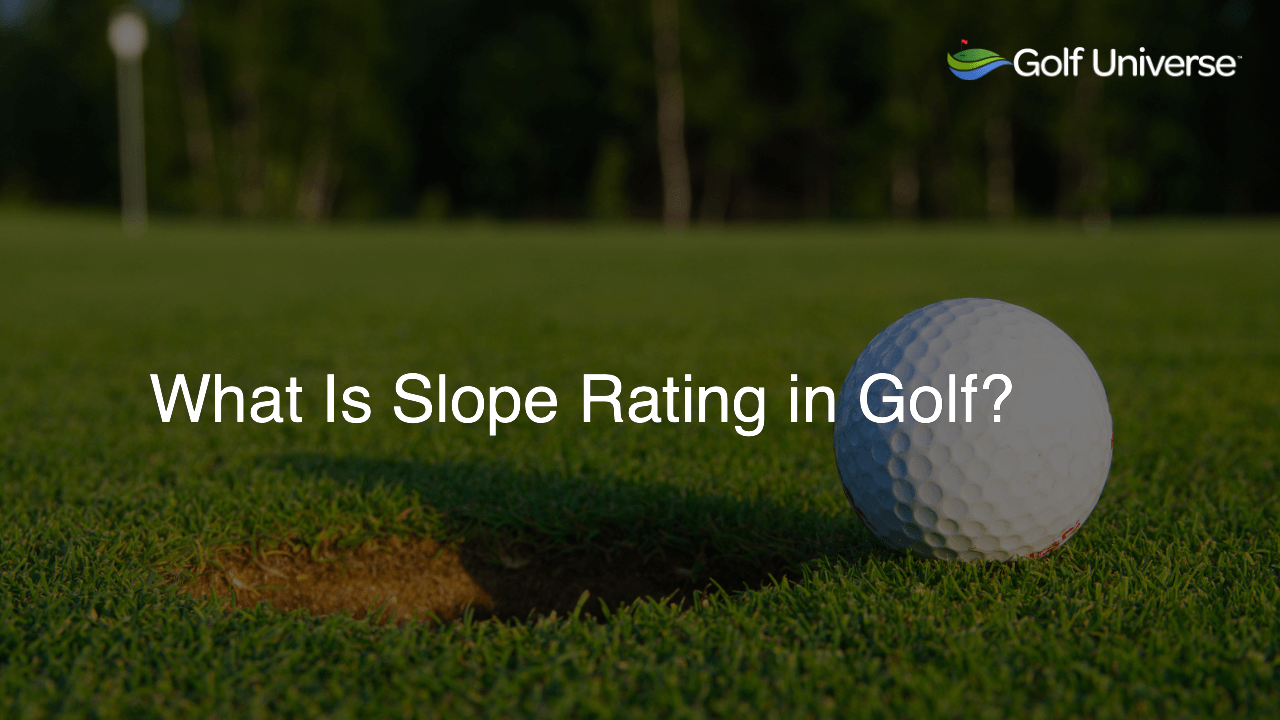Slope Rating in golf is a measurement that indicates the relative difficulty of a golf course for a bogey golfer (player with a higher handicap) compared to a scratch golfer (player with a zero handicap). It helps to level the playing field by determining how many handicap strokes a player should receive, taking into account the course difficulty. A higher slope rating represents a more challenging course for bogey golfers.
Understanding Slope Rating in Golf
The Slope Rating in golf is a crucial element in handicapping, as it helps level the playing field for golfers of various skill levels. It quantifies the relative difficulty of a course, allowing players to understand how challenging a specific golf course might be for them.
How Slope Rating is Calculated
Created by the United States Golf Association (USGA), the Slope Rating is derived from the difference between the Bogey Rating and the Course Rating. The Bogey Rating represents the expected score of a bogey golfer, while the Course Rating signifies the expected score of a scratch golfer on the same course. To calculate the Slope Rating, the difference between these two ratings is multiplied by a constant factor of 5.381 for men and 4.240 for women. Finally, the value is rounded to the nearest whole number.
Example:
If a golf course has a Course Rating of 72.0 and a Bogey Rating of 96.0, the Slope Rating for men would be (96.0 – 72.0) x 5.381 = 129.
Analyzing the Slope Rating
The average Slope Rating is 113, with the minimum being 55 and the maximum reaching 155. A lower Slope Rating indicates that the course difficulty does not vary much between scratch and bogey golfers, while a higher Slope Rating signifies a more challenging course for higher handicap players.
Course Difficulty Levels:
- 55-69: Least difficult
- 70-92: Moderately difficult
- 93-113: Average difficulty
- 114-133: More difficult
- 134-155: Most difficult
Implications of Slope Rating
The Slope Rating helps to determine the appropriate number of handicap strokes, ensuring fair and competitive play among golfers of different skill levels. When playing on a course with a different Slope Rating than the player’s home course, it’s essential to adjust the player’s handicap index accordingly. To do this, the following formula is used:
Handicap Index × (Course Slope Rating ÷ 113)
This adjusted handicap ensures that golfers can compete equitably across different courses and varying levels of difficulty.
Putting Slope Rating into Practice
At Golf Universe, we often hear about both amateur and experienced golfers aiming to improve their game. One of the key factors in making meaningful progress is playing on courses that match your skill level. Slope Rating can help you choose the right course by giving an insight into the difficulty level for both bogey and scratch golfers.
Golf Universe’s Recommendations
As a trusted resource in the golfing world, Golf Universe offers a few suggestions on how to use the Slope Rating to your advantage:
- Course Selection: Choose courses with a variety of Slope Ratings to gain experience and assess your performance on different difficulty levels.
- Expand Your Horizons: Don’t just stick to your local courses. Golf Universe encourages golfers to cruise through its blog, which features reviews and experiences on courses worldwide, offering an excellent opportunity to explore courses with a wide range of Slope Ratings.
- Handicap Tracking: To ensure you maintain an up-to-date handicap index, it’s essential to track your scores and note the Slope Ratings of the different courses you play.
Versatility for Better Performance
Here at Golf Universe, we believe that understanding the nuances of Slope Rating can not only improve your skills but also enhance your overall enjoyment of the sport. When appropriately implemented, the Slope Rating will help create fair and challenging competition for all golfers, regardless of skill level. As you progress through your golfing journey, remember to make the most of the insightful resources available on our blog, as we continue to provide relevant information on golf techniques, equipment, and course analysis.
Frequently Asked Questions
We understand that understanding Slope Rating in golf can raise some questions. The following FAQs address some common concerns and provide insights for readers to better grasp the concept.
What’s the difference between Course Rating and Slope Rating?
Course Rating represents the expected score of a scratch golfer (zero handicap) on a specific course. Slope Rating, on the other hand, measures the relative difficulty of a course for a bogey golfer (higher handicap) compared to a scratch golfer, helping to determine handicap strokes.
Why is the average Slope Rating 113?
The USGA has set the average Slope Rating at 113 as a baseline to represent courses of average difficulty for bogey golfers. This number helps calibrate handicap adjustments when playing on different courses by providing a standardized reference point.
How does Slope Rating affect my handicap?
Slope Rating directly influences your course handicap, which is used for playing various courses with different Slope Ratings. By adjusting your handicap index according to the Slope Rating of the course you’re playing, you’ll ensure a more equitable and competitive experience.
Can I find a course’s Slope Rating before playing?
Yes, you can often find a course’s Slope Rating either on their official website, at the pro shop, or on the scorecard provided on-site. Golf associations and various golf blogs, including Golf Universe, also share information on courses and their Slope Ratings.
Are there any disadvantages to using the Slope Rating system?
The primary disadvantage of the Slope Rating system is the potential lack of universal implementation at golf courses worldwide. While increasingly popular, not all courses outside the United States may have a Slope Rating available, potentially limiting its usefulness for international players.











